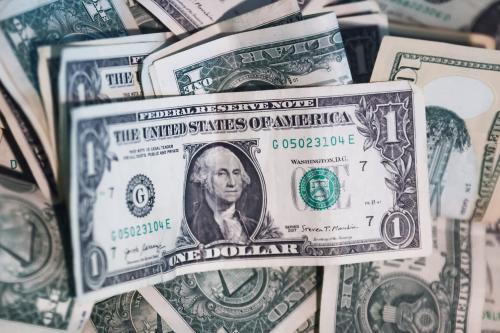In a national emergency, the president has many legal authorities, most of which are adequate to the job. But Donald Trump is inadequate to do the job. He is a president who lacks familiarity with how government works at any level—especially the federal government and especially during a crisis. He is a president who either systematically fires people from the White House who have relevant experience or refuses to fill critical jobs across government. The result has been on full display during the coronavirus pandemic: chaos and incompetence.
In order to understand a president’s emergency powers, it is important to realize that the federal government is run by the rule of law, not by the rule of a single man or woman who happens to be president. For the amateur, these laws and regulations are often cumbersome and complicated. Often a set of decisions requires a careful sequence of actions in order to meet legal requirements. But for someone who has experience and skill at governing, the president’s emergency authorities provide a great deal of flexibility—as do the laws themselves.
Some history on presidential authority in national disasters
For much of American history, disasters were dealt with by local authorities and the federal government, much less the president, had little or no role. For example, in 1900, Galveston, Texas, was decimated by a hurricane but no substantial federal resources were deployed. By mid-century, federal involvement in responding to natural disasters was not much more robust. Hurricane Diane struck North Carolina in 1955 but the federal government covered only 6.2% of the damages. But by the 1970s, the nation’s governors were putting pressure on Congress to have a more robust and organized approach to national disasters. They passed two major disaster relief bills and President Jimmy Carter created the Federal Emergency Management Agency (FEMA) in 1979.
In 1988, Congress passed amendments to the Disaster Relief Act which are widely known as the Stafford Act. This act formalized the process for handling disasters in the United States. The act operates on the assumption that states and localities are the first responders and that they alone can most effectively assess the damage resulting from a disaster. The act states: “Based on the request of a Governor under this section, the president may declare under this Act that a major disaster or emergency exists.”[1]
Since then, federal disaster management has had regular ups and downs and presidential fortunes have followed. Under President Ronald Reagan, FEMA concentrated its planning and resources on “continuity of government” issues—the infrastructure that would be needed to keep the government functioning in the event of a nuclear attack. That meant giving short shrift to natural disasters and consequently FEMA performed poorly during Hurricane Hugo in 1989 and again during Hurricane Andrew in 1992. Reagan’s successor, President George H.W. Bush, ultimately paid the price.
By the time Bill Clinton became president, FEMA itself was a disaster and several bills were pending in Congress to just get rid of it. Instead, President Clinton nominated an expert in disaster management to head the agency and Vice President Al Gore and his “reinventing government” team worked with the new agency head to reform it.[2] FEMA became a model government agency, performing adroitly during the 1993 Mississippi River floods and the 1994 Northridge earthquake.
And then, in the aftermath of the 9/11 attacks Congress created a new cabinet department, the Department of Homeland Security, in what would be the largest reorganization of the federal government in decades. FEMA, which used to be a free-standing agency whose head had a direct line to the president, was suddenly buried in a bureaucracy and the focus shifted from run-of-the-mill disasters to preparedness for terrorist attacks. States discovered that it was easier to get grants for protective gear against biochemical attacks than it was to get grants for more everyday threats like floods.
The result was the biggest emergency response failure until now: the government’s slow and botched handling of Hurricane Katrina. The story of that failure has been told often and I won’t retell it here. Suffice it to say that it casts a long shadow over the present situation. During Katrina, the White House moved too slowly, not recognizing the severity of the situation until it was too late, and not understanding how to exercise the powers of the government until it was too late and lives were lost.
Trump’s Katrina
The coronavirus is President Trump’s Katrina. As in Katrina, the White House was slow to realize the severity of the problem, the White House took too long to figure out how the government, especially the military, could be mobilized to help out the civilian responders and, the White House took too long to cut through a morass of red tape. The only major difference is that in this emergency, health agencies—not FEMA—are the locus of action.
On January 22, Trump told Americans not to worry. The next day Wuhan, China, a city with 11 million people, was placed under quarantine. By the end of January, public health experts were writing op-ed pieces about how to get ready for this pandemic, and Trump was still claiming that everything was under control. It wasn’t. On January 31, Trump announced that no foreign nationals who had been to China in the past 14 days would be allowed in the United States. It was the first major acknowledgement from the president that there was a problem, and his limited action proved inadequate when a resident of Washington visiting China ultimately brought the virus to our shores.
For the next month, as the virus spread, Trump continued his upbeat assessments, even claiming on February 26 that the number of cases was going down. Finally, on March 11—50 days after Wuhan went into quarantine—Trump addressed the nation on the virus. By then, his demeanor had changed; he was finally taking the issue seriously, and he announced that Vice President Pence would be in charge of a special task force on the issue.
Since then, Trump has begun to discover the many ways in which the president of the United States can use emergency powers to intervene in a pandemic.
For instance, as the crisis grew, hospital workers found that they were dramatically short of the protective gear needed to keep themselves safe, as patients with suspected cases of coronavirus arrived at hospitals. On March 18, 2020, the president said that he would invoke the Defense Production Act which allows the U.S. government to harness private industry to produce whatever the government needs. The law was passed in 1950 in order to respond to the production needs for the Korean War. Trump’s invocation of the act, however, was clouded in the typical Trumpian confusion (it was immediately unclear what precisely the president was authorizing be produced). But the bottom line is this authority has existed for 69 years; it could have been invoked much earlier and with greater clarity.
Another example of administration incompetence involves the issue of testing kits. South Korea, one of the countries hit hardest by the pandemic, was testing 10,000 people a day, many in drive-by testing centers, while the United States was struggling with a shortage of kits. Testing is critical to a pandemic. Without it, we are flying blind, with no knowledge of how widespread the virus is and who may have already been infected.
The problem began in the Centers for Disease Control and Prevention where a test was developed and distributed on February 5. The test, however, was soon found to be defective and distribution ceased. On March 6, the president told reporters “Anybody who wants a test will get a test, that’s the bottom line.” He was quickly proven wrong.
Meanwhile, by the end of February, as the pandemic picked up momentum, the World Health Organization was distributing more than a million tests around the world. In February, the Food and Drug Administration invoked “emergency use testing,” which allowed private laboratories, hospital labs, and state health laboratories to short-circuit the bureaucracy and go ahead with development of the tests. Roche Pharmaceuticals, was one of the first companies granted an emergency use authorization (EUA). Now weeks after the president told reporters that everyone could be tested, laboratories all over the country are being given EUAs in order to develop their own tests but the demand for tests is still running ahead of the supply. In the meantime, weeks were lost and uncertainty reigned.
All along, however, the “emergency use testing” was the solution to the testing debacle. It is a provision in the Food and Drug Administration’s statute. The EUA isn’t as old as the Defense Production Act but it’s pretty old. Introduced as an amendment to the Federal Food, Drug and Cosmetics Act in 2004, it cuts through the red tape involved in development of a new drug or a new test in times of emergency. According to the FDA:
Section 564 permits the FDA Commissioner to authorize the use of an unapproved medical product or an unapproved use of an approved medical product during a declared emergency involving a heightened risk of attack on the public or U.S. military forces, or a significant potential to affect national security.
The FDA has issued EUAs for many other potentially devastating diseases, such as Ebola, MERS and the Zika virus. In other words, this clause should have been invoked in January or at least as soon as the CDC tests were found to be faulty and we would have had a huge jump on getting tests out.
The bottom line
Imagine an alternate scenario—one where a group of bureaucrats from the National Security Council had been able to walk into the Oval Office in mid-January with a list of things the president should do to get ready for a pandemic.[3] As General John Allen, veteran of many meetings in the situation room, says, “Coherence on problem solving comes from the National Security Council Staff.”[4] Imagine how different things may have been if most of the Trump officials who had participated in a pandemic exercise held during the transition (which used a scenario where 600,000 Americans died) had still been in office and had mastered the intricacies of their departments.
But the Trump administration deprived themselves of needed expertise when they permitted the section of the National Security Council that had been set up to plan for pandemics to be dismantled under the guise of “streamlining.” And the turnover in the ranks of Trump appointees has been so extensive and so unprecedented that they have few experienced government servants running major departments.
Obviously, no one expects a president to go into office knowing the ins and outs of Food and Drug Administration regulations or the authorities in a piece of legislation developed for the Korean War. But we should expect our president to preside over a White House where people have extensive knowledge of all parts of the government and can provide to him, at a moment’s notice, the full range of options available to a president confronting a national emergency.
Unfortunately this is not the president we have.
[1] Page 81, Why Presidents Fail
[2] The author worked for Vice President Gore in the White House on this project.
[3] That’s what happened in the tiny country of Singapore where the pandemic was brought swiftly under control.
[4] Meeting with General Allen, March 20, 2020
The Brookings Institution is committed to quality, independence, and impact.
We are supported by a diverse array of funders. In line with our values and policies, each Brookings publication represents the sole views of its author(s).





Commentary
In a national emergency, presidential competence is crucial
March 20, 2020